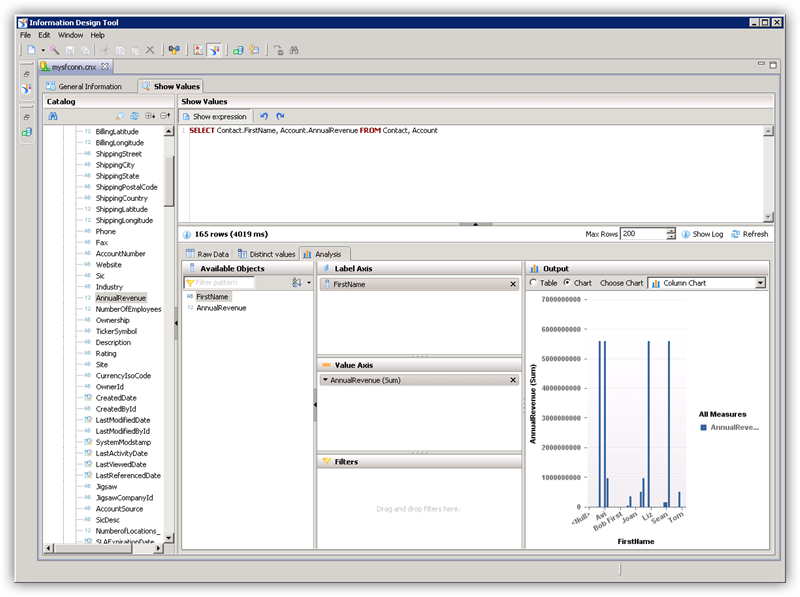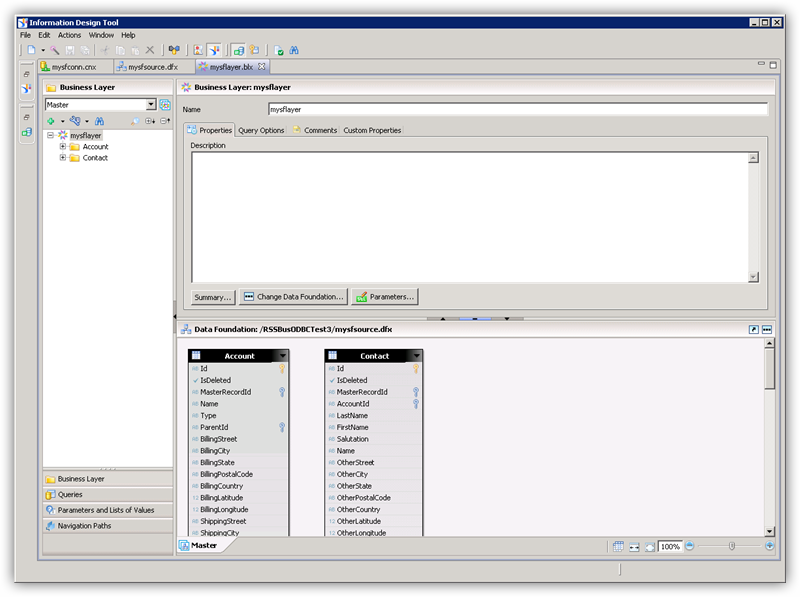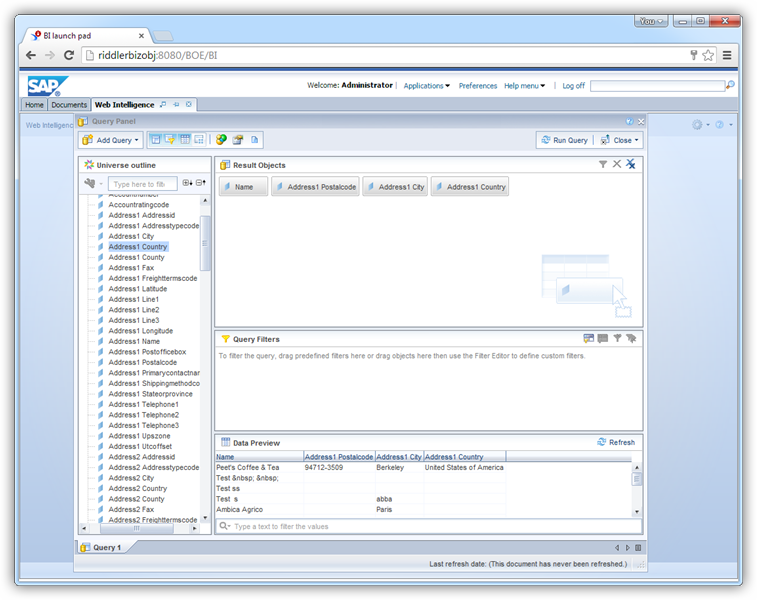Model Context Protocol (MCP) finally gives AI models a way to access the business data needed to make them really useful at work. CData MCP Servers have the depth and performance to make sure AI has access to all of the answers.
Try them now for free →Create an SAP BusinessObjects Universe on the CData ODBC Driver for Jira
Provide connectivity to Jira data through an SAP BusinessObjects universe.
This article shows how to create and publish an SAP BusinessObjects universe on the CData ODBC Driver for Jira. You will connect to Jira data from the Information Design Tool as well as the Web Intelligence tool.
About Jira Data Integration
CData simplifies access and integration of live Jira data. Our customers leverage CData connectivity to:
- Gain bi-directional access to their Jira objects like issues, projects, and workflows.
- Use SQL stored procedures to perform functional actions like changing issues status, creating custom fields, download or uploading an attachment, modifying or retrieving time tracking settings, and more.
- Authenticate securely using a variety of methods, including username and password, OAuth, personal access token, API token, Crowd or OKTA SSO, LDAP, and more.
Most users leverage CData solutions to integrate Jira data with their database or data warehouse, whether that's using CData Sync directly or relying on CData's compatibility with platforms like SSIS or Azure Data Factory. Others are looking to get analytics and reporting on live Jira data from preferred analytics tools like Tableau and Power BI.
Learn more about how customers are seamlessly connecting to their Jira data to solve business problems from our blog: Drivers in Focus: Collaboration Tools.
Getting Started
Connect to Jira as an ODBC Data Source
If you have not already, first specify connection properties in an ODBC DSN (data source name). This is the last step of the driver installation. You can use the Microsoft ODBC Data Source Administrator to create and configure ODBC DSNs.
To connect to JIRA, provide the User and Password. Additionally, provide the Url; for example, https://yoursitename.atlassian.net.
When you configure the DSN, you may also want to set the Max Rows connection property. This will limit the number of rows returned, which is especially helpful for improving performance when designing reports and visualizations.
Create an ODBC Connection to Jira Data
This section shows how to create a connection to the Jira ODBC data source in the Information Design Tool. After you create a connection, you can analyze data or create a BusinessObjects universe.
Right-click your project and click New -> New Relational Connection.
- In the wizard that is displayed, enter a name for the connection.
Select Generic -> Generic ODBC datasource -> ODBC Drivers and select the DSN.
-
Finish the wizard with the default values for connection pooling and custom parameters.
Analyze Jira Data in the Information Design Tool
In the Information Design Tool, you can use both published and local ODBC connections to browse and query data.
In the Local Projects view, double-click the connection (the .cnx file) to open the Jira data source.
On the Show Values tab, you can load table data and enter SQL queries. To view table data, expand the node for the table, right-click the table, and click Show Values. Values will be displayed in the Raw Data tab.
On the Analysis tab, you can drag and drop columns onto the axes of a chart.

Publish the Local Connection
To publish the universe to the CMS, you additionally need to publish the connection.
In the Local Projects view, right-click the connection and click Publish Connection to a Repository.
Enter the host and port of the repository and connection credentials.
Select the folder where the connection will be published.
In the success dialog that results, click Yes to create a connection shortcut.
Create a Universe on the ODBC Driver for Jira
You can follow the steps below to create a universe on the ODBC driver for Jira. The universe in this example will be published to a repository, so it uses the published connection created in the previous step.
In the Information Design Tool, click File->New Universe.
Select your project.
Select the option to create the universe on a relational data source.
Select the shortcut to the published connection.
Enter a name for the Data Foundation.
Import tables and columns that you want to access as objects.
Enter a name for the Business Layer.

Publish the Universe
You can follow the steps below to publish the universe to the CMS.
In the Local Projects view, right-click the business layer and click Publish -> To a Repository.
In the Publish Universe dialog, enter any integrity checks before importing.
Select or create a folder on the repository where the universe will be published.
Query Jira Data in Web Intelligence
You can use the published universe to connect to Jira in Web Intelligence.
Open Web Intelligence from the BusinessObjects launchpad and create a new document.
Select the Universe option for the data source.
Select the Jira universe. This opens a Query Panel. Drag objects to the Result Objects pane to use them in the query.


